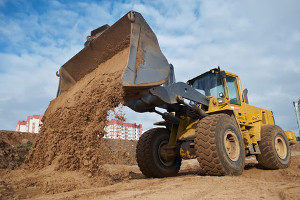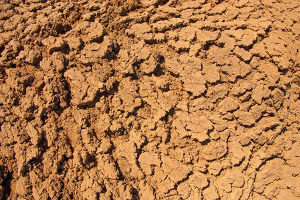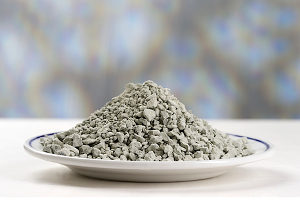 Fill dirt, as the name implies, is an earthy material that is used to fill a hole on the ground or to create mounds. It is used for different construction projects–big or small. Large construction projects can use fill dirt for raising ground levels before building structures or preparing the ground for paving projects aside from filling holes. Smaller projects can also benefit from fill dirt and it can be used for preparing a backyard for landscaping, create raised planting beds, and secure retaining walls.
Fill dirt, as the name implies, is an earthy material that is used to fill a hole on the ground or to create mounds. It is used for different construction projects–big or small. Large construction projects can use fill dirt for raising ground levels before building structures or preparing the ground for paving projects aside from filling holes. Smaller projects can also benefit from fill dirt and it can be used for preparing a backyard for landscaping, create raised planting beds, and secure retaining walls.
What Is a Fill Dirt?
Fill dirt, as a filling, is often referred to as a subsoil. A dirt that is free from organic matter and is made up of more solid particles that can withstand from breaking down or composting such as the topsoil. The problem with the presence of organic matter is that they break down thus releasing gas in the process. The presence of gas creates pockets of gas thus resulting in the shifting of the soil that can affect the stability of the fill dirt.
It is important to take note that the fill dirt should allow water to drain easily. Good drainage of the fill dirt accounts for the structural stability especially if it is used to support a structure such as retaining wall.
How to Determine If the Soil Is a Good Fill Dirt
The thing is, you cannot just use ordinary soil as a fill dirt. While you can buy them readily classified from home improvement stores or landscaping companies, it is still crucial to know how to identify if what you have is a good fill dirt.
The first thing that you need to do is to take a jar and fill it with 2/3 water and a teaspoon of dishwashing soap. Add fill dirt until you are about 1 inch from the top of the jar. Place the lid on the jar and shake for 30 seconds.
 Allow the soil to settle until the liquid is clear. A good dirt will settle at the bottom. What floats on the top is the silt. Take note of the amount of silt that you have. Silt usually means the presence of clay. While clay is also used as a fill dirt as it is perfect for being used as a base for cement paths and smaller projects, make sure that you only have a maximum of 50% clay.
Allow the soil to settle until the liquid is clear. A good dirt will settle at the bottom. What floats on the top is the silt. Take note of the amount of silt that you have. Silt usually means the presence of clay. While clay is also used as a fill dirt as it is perfect for being used as a base for cement paths and smaller projects, make sure that you only have a maximum of 50% clay.
Types of Fill Dirt Available
There are different types of fill dirt materials that are available today. It is important to take note that the type of material that you get will depend largely on the type of project that you have in mind. Thus, below are the types of fill dirt materials that you can use for your projects.
Coarse-Grained Soil
Coarse-grained soil includes small gravels and sand. This type of dirt is the most popular as they have low plasticity and good compaction characteristics thus making it an excellent material for supporting foundations. They are well-suited in confined areas that are near structures where heavy equipment is not permitted. These include tunnels, tanks, and culverts. When using this particular material, it can be air dried or saturated to achieve good compaction. This is to ensure that good drainage is achieved, and liquefaction of the material is avoided. Adding cement can also be done to stabilize the sand especially if they are used on narrow and confined areas where compaction is difficult to achieve.
Fine-Grained Soil
Organic clay is a good example of fine-grained fill dirt. It is characterized by having medium plasticity. It is also impervious thus it can be compacted easily using heavy compaction equipment to provide a stable backfill.
 This type of fill dirt material can be compacted into confined places that require a higher degree of compaction. But since it is impervious, water-logging can be a potential problem thus it is crucial to take extra control of the water content of the material. It should have enough moisture as too little can also lead to the loss of strength thus affecting the stability of the structure that it supports.
This type of fill dirt material can be compacted into confined places that require a higher degree of compaction. But since it is impervious, water-logging can be a potential problem thus it is crucial to take extra control of the water content of the material. It should have enough moisture as too little can also lead to the loss of strength thus affecting the stability of the structure that it supports.
On the other hand, too much moisture can subject the material to liquefaction especially when loaded with too much weight. Thus, before using this type of fill dirt, determining the liquefaction potential of the area is necessary. Although not a preferred choice by many contractors, this type of material is perfect for landscaping and creating raised beds as it retains moisture necessary for plant growth.
Rock
Rock, as a fill dirt material, is a stable material. However, its stability depends largely on the hardness as well as a gradation of the rock particles. The downside to this material is that it can be an expensive fill dirt option. But what most contractors do is that they excavate other areas to extract rocks and run them through a rock crusher to be able to get uniform rock sizes. Nevertheless, it is still an expensive process compared to acquiring sand or clay.
Commercial By-Products
Commercial by-products such as fly ash or furnace slag can be an alternative material especially if the conventional materials are not locally available. These materials are very lightweight thus they do not provide good stability if they are used to support heavy structures.
To Sum It Up…
It is important to take note that most construction products require dirt for various reasons. This is the reason why it is important to obtain high-quality fill dirt that will complement the type of project that you have in mind. If it is your first time to look for fill dirt, make sure that you know your options by getting yourself educated. If you are looking for quality fill dirt, make sure that you seek the right supplier. Here at Dirt Connections, we supply quality fill dirt for your home as well as the construction site. Contact us for free dirt!









































